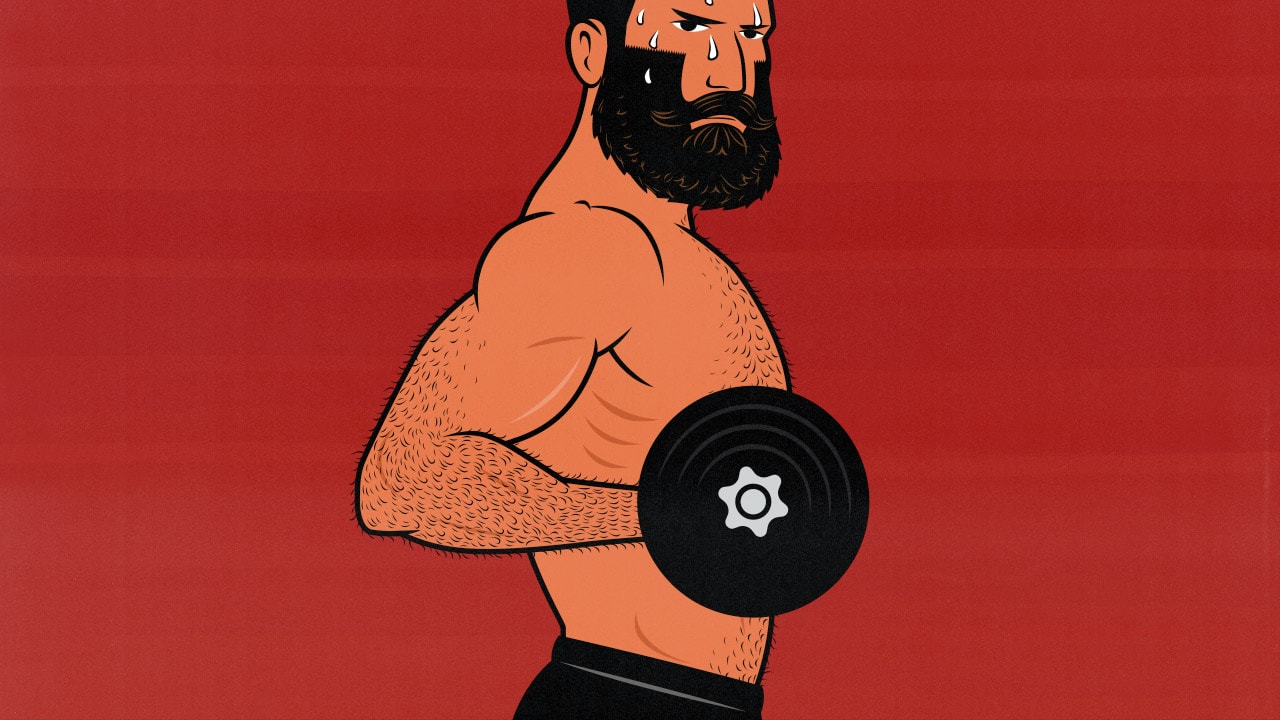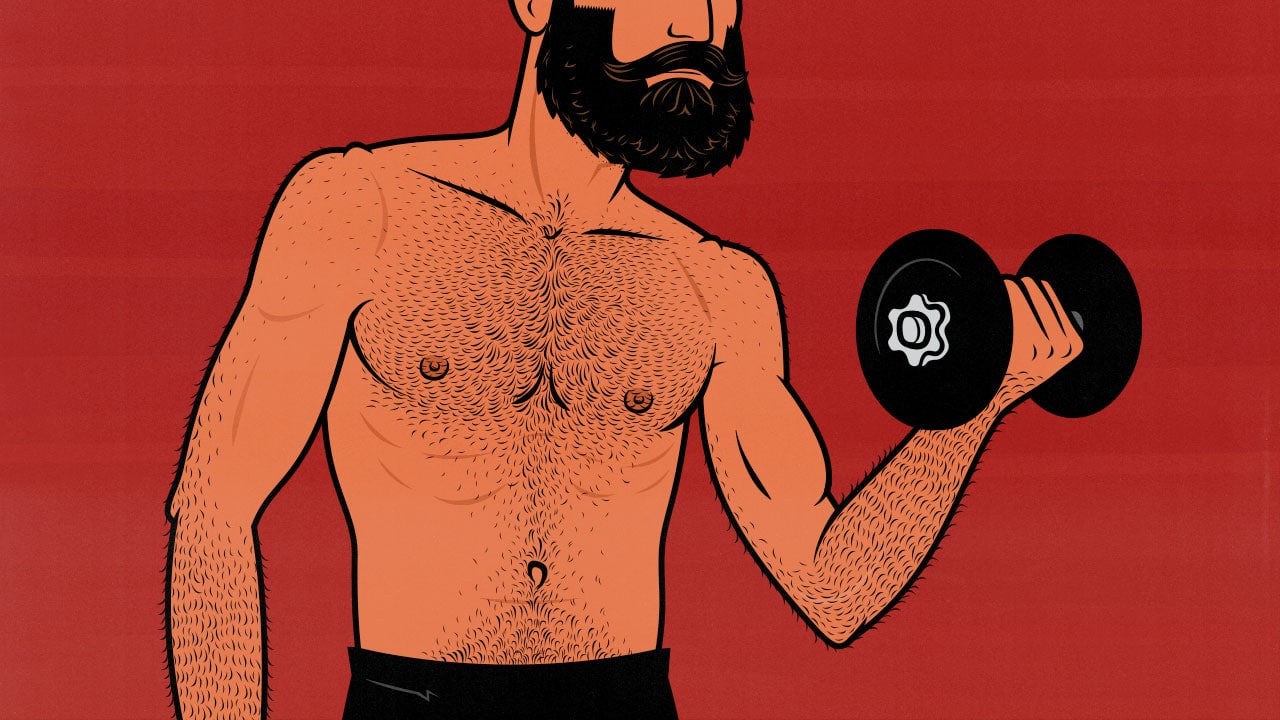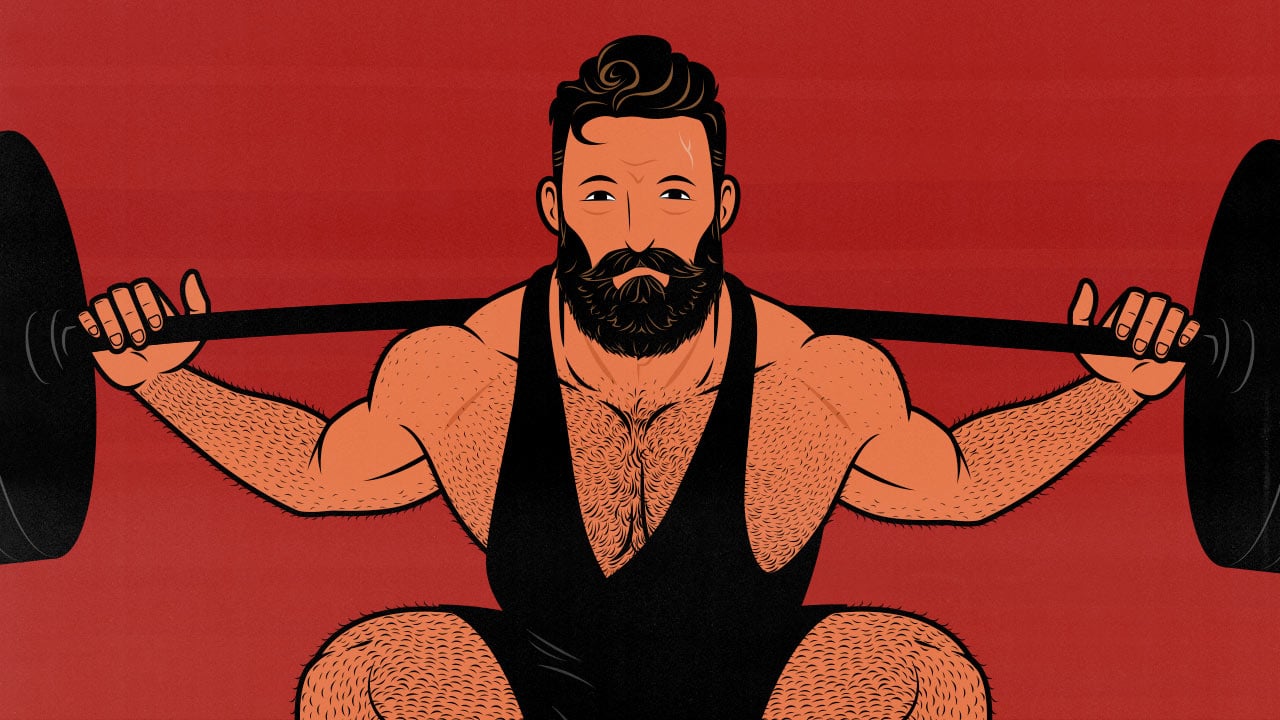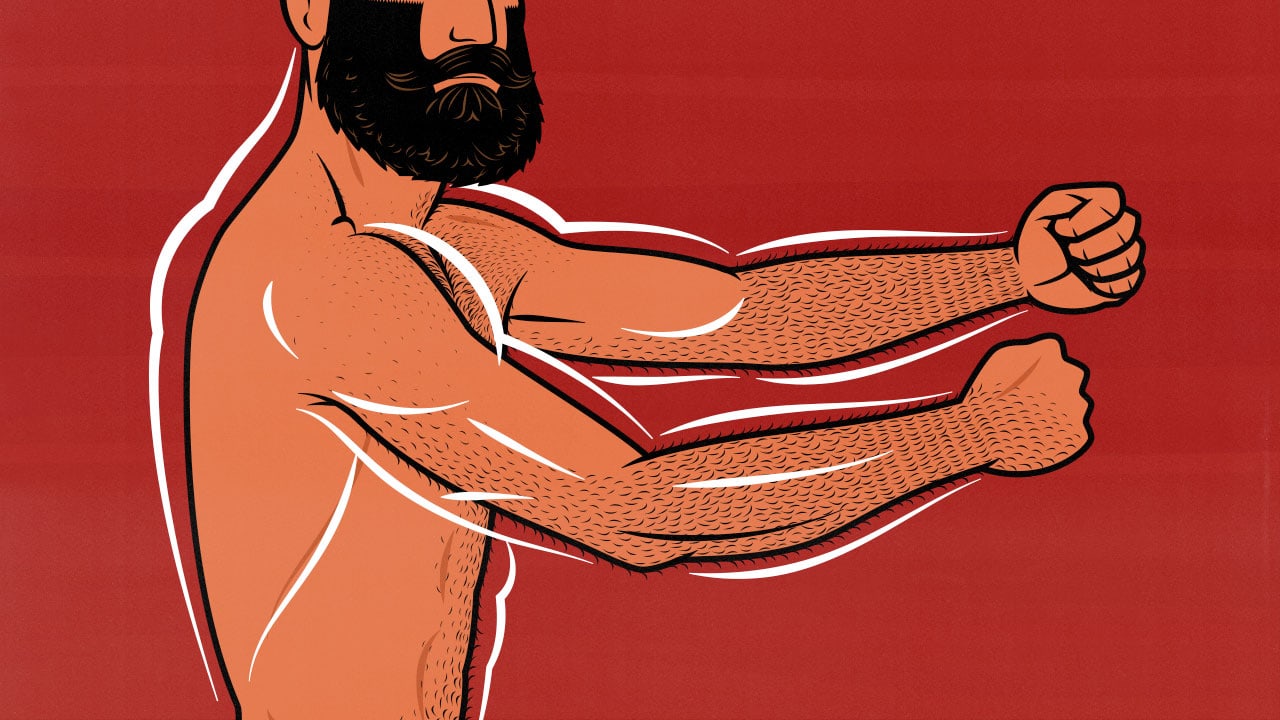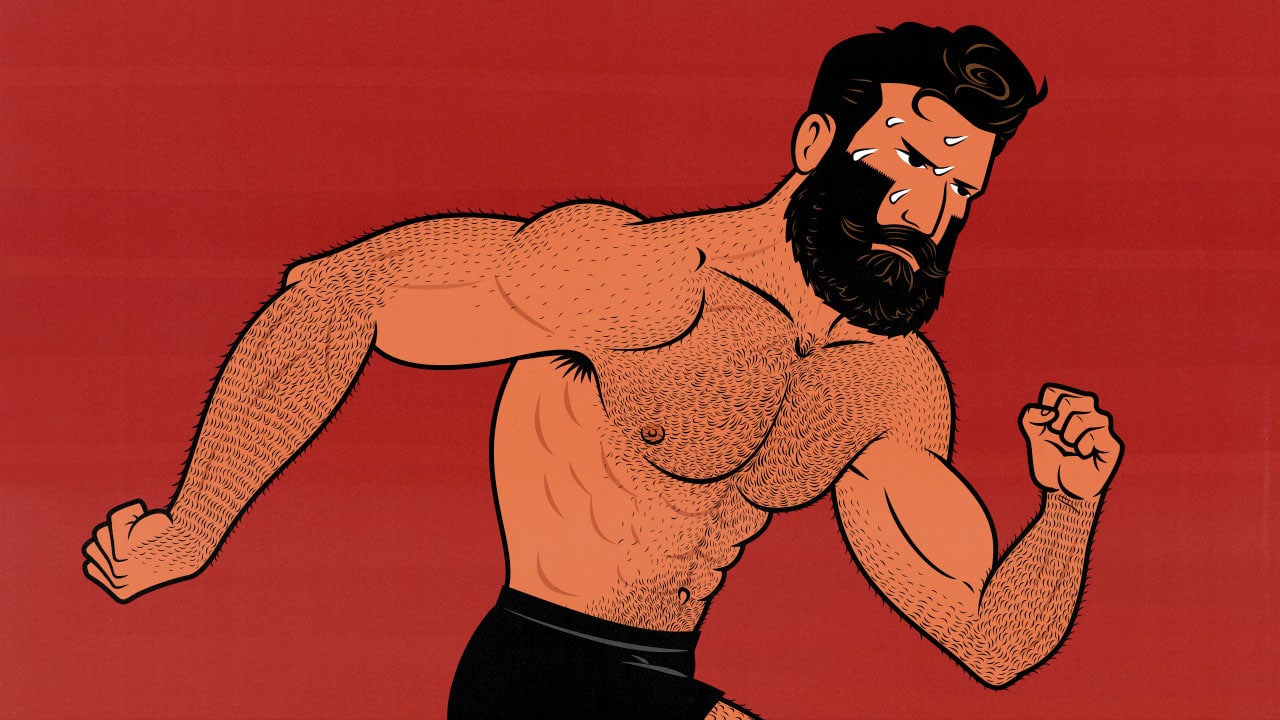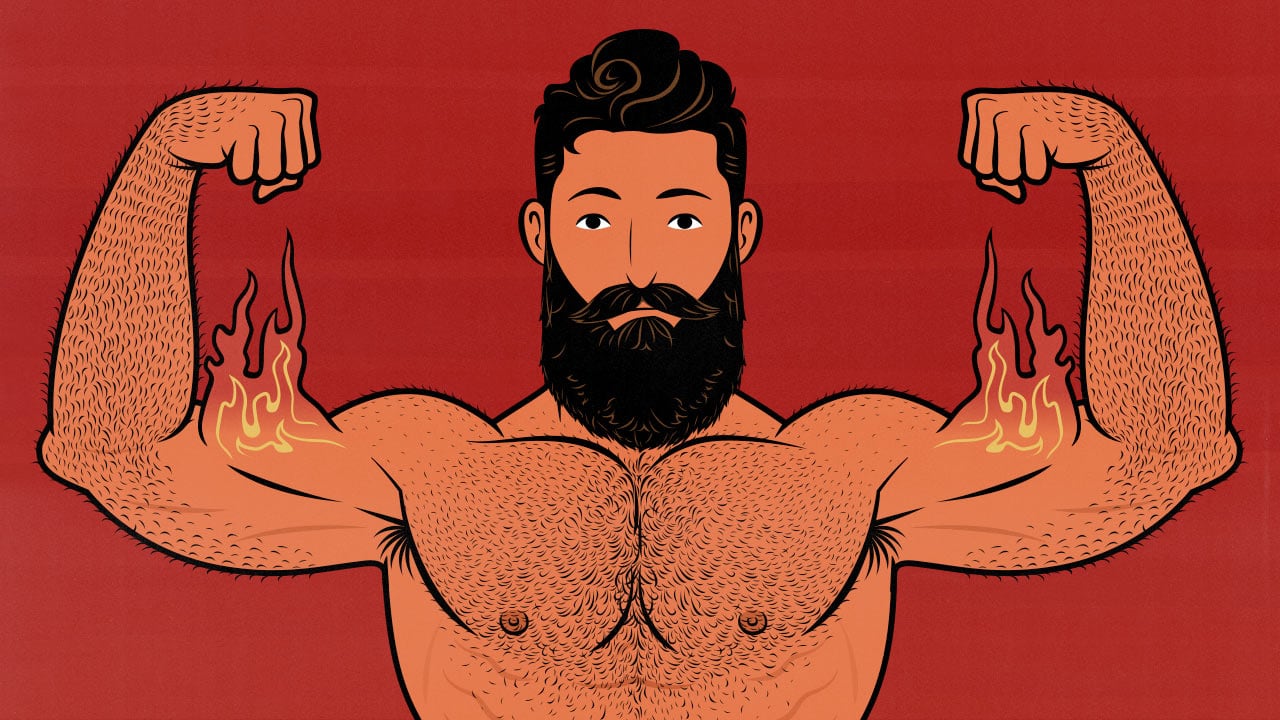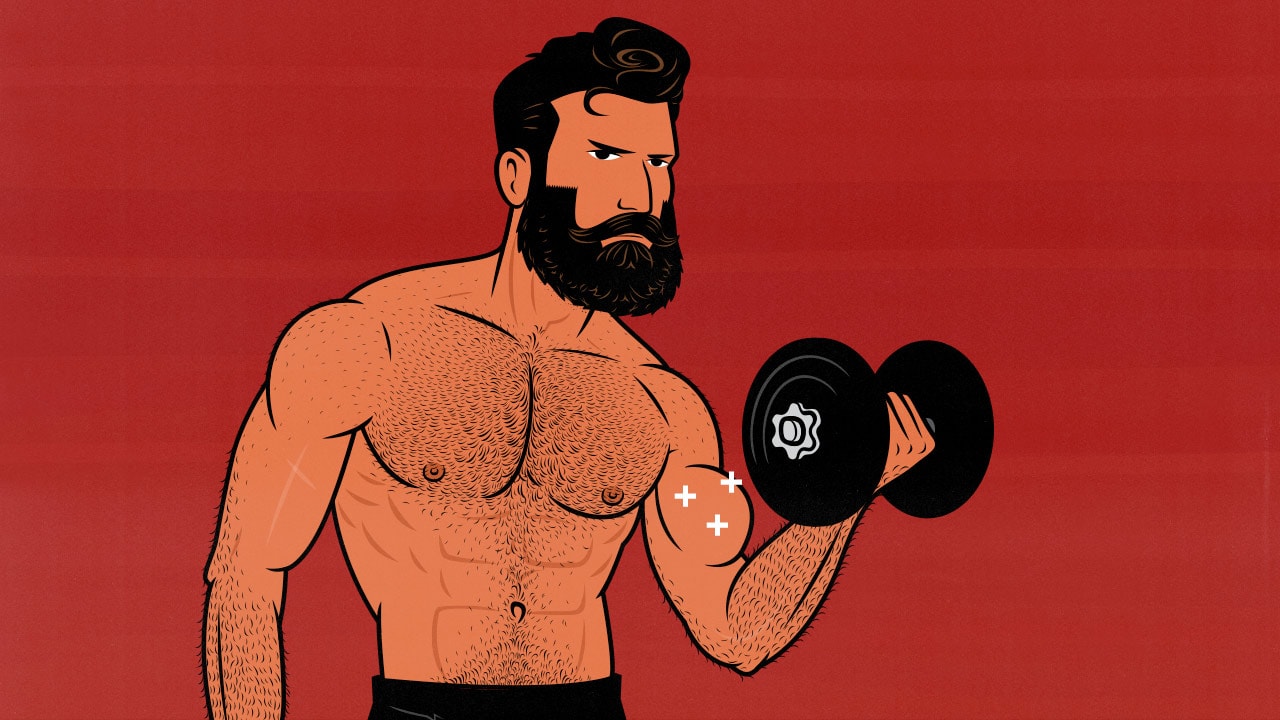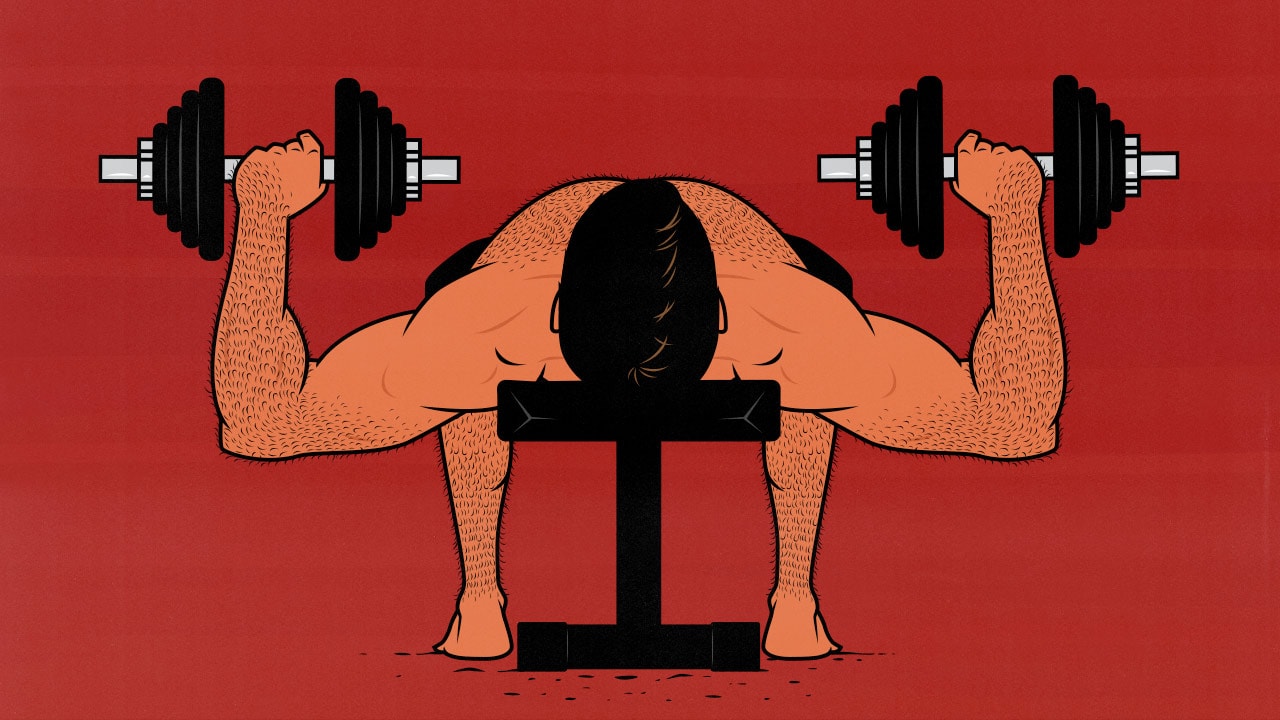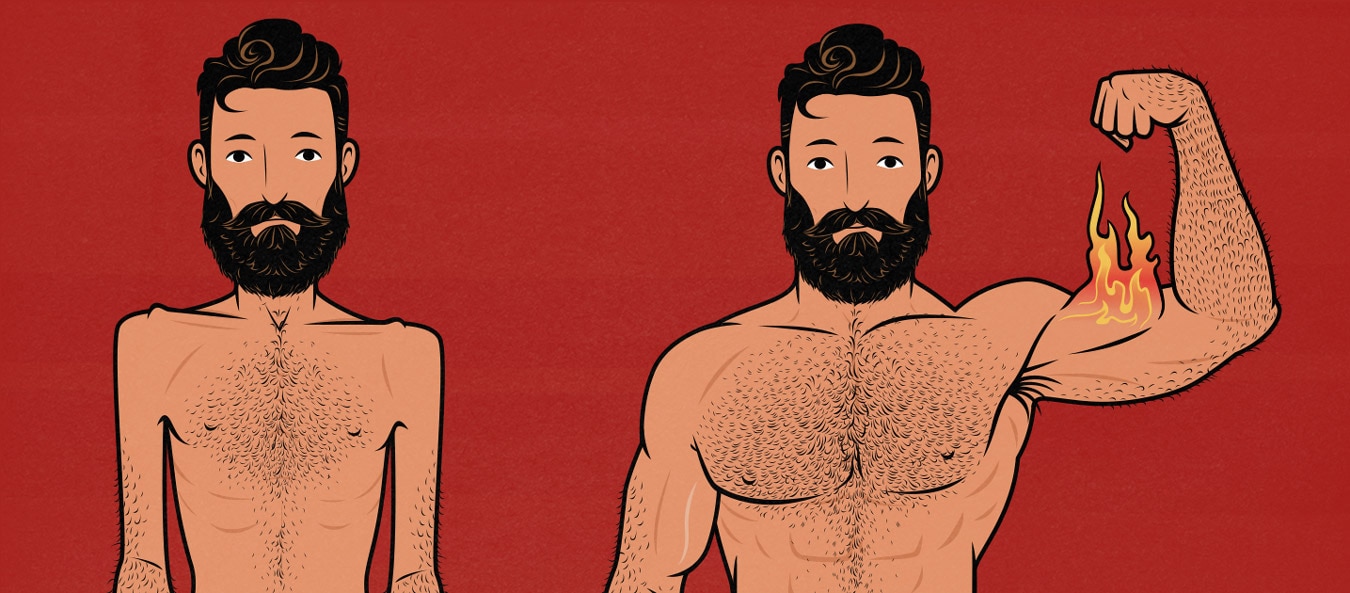Articles
Drag Curls Aren’t As Good As Regular Biceps Curls (Here’s Why)
A drag curl is a type of biceps curl where you keep the weight close, “dragging” it up your body. The idea is to make the curl easier at the bottom and harder at the top. This makes the biceps curls worse in two ways:
- You’ll stimulate more muscle growth by challenging your biceps at the bottom of the range of motion, not the top. There’s no benefit to emphasizing the top. The entire purpose of the drag curl is misguided.
- To keep the weight close, you need to bring your elbows back behind your body. This movement at the shoulder joint prevents the long head of your biceps from engaging properly.
This might make it seem like I hate drag curls. I don’t. You can use them to build bigger biceps. They’re a perfectly fine exercise. However, regular biceps curls are quite a bit better, so it’s hard to think of a situation where you’d want to do drag curls.
If you want to stimulate more muscle growth with your biceps curls, you should do almost the exact opposite of a drag curl. I’ll show you how.
Delve into the detailsDoes Exercise Reduce Inflammation? How? And How Much?
Exercise both increases and reduces inflammation. The stress of exercise causes a surge in inflammation. This inflammation helps you recover and adapt. When that inflammation fades, it drops down to a lower baseline, reducing your overall levels of inflammation.
Delve into the detailsHow to Optimize Your Stimulus-to-Fatigue Ratio (SFR)
The Stimulus-to-Fatigue Ratio (SFR) is a way to compare how much benefit a workout stimulates against how much fatigue it generates. The idea is to increase the stimulus while reducing the fatigue. For example, if you’re trying to build muscle, you could try to stimulate more muscle growth without generating as much fatigue.
At first, this can create the illusion that fatigue is bad and should be minimized, but it’s not quite that simple. Fatigue can also provoke adaptations, helping you grow bigger, stronger, and fitter. You don’t want to min-max away those benefits. Better to stimulate as much muscle growth as you can without generating too much fatigue.
Finally, you can improve your body’s ability to generate energy and recover from training. One of the best ways to reduce fatigue is to become not just bigger and stronger but also fitter.
Delve into the detailsThe Best Push/Pull/Legs (PPL) Routine for Building Muscle
Push/Pull/Legs (PPL) routines divide your muscles into three groups: your pushing muscles, your pulling muscles, and your legs. Each group of muscles gets a dedicated training day, allowing you to work out six days per week while still giving your muscles 3-4 days to recover.
It’s a powerful way to train. You can stimulate a ton of muscle growth this way. These routines are incredibly popular with serious bodybuilders, rivalled only by the mighty Bro Split.
The other great advantage of Push/Pull/Legs routines is they’re relatively easy. Full-body workouts are great for beginners, but as you get stronger, the weight looms heavier, and training every muscle in a single workout can become oppressive. Much easier to divide up the workload.
Delve into the detailsExercise Order: Which Exercises Should You Do First?
The conventional wisdom is to start each workout with the big compound lifts, then move to smaller assistance exercises, and then finish with isolation exercises. That’s a perfectly fine way to structure your workout. Ordering your exercises that way will work.
However, the research doesn’t quite support that advice; there’s some nuance to delve into, and you might prefer to put your exercises in a different order.
Delve into the detailsHow to Do Cardio—The Complete Beginner Guide
The guidelines for general health are simple: you need at least 150 minutes of cardio per week. If the cardio is twice as hard, you only need half as much. More on that in a moment.
But there’s more to cardio than merely putting in the time. You also need to provoke an adaptation. You need to train in a way that improves your cardiorespiratory fitness. That way, you get the benefits of having increased mitochondrial density, a higher VO2 max, more blood vessels, and a lower resting heart rate.
Marco has over a decade of experience helping people improve their cardio, with clients including college, professional, and Olympic athletes. It doesn’t need to be that complicated. We’ll explain the basics of cardio, give you a beginner routine, and then show you how to progress to more difficult workouts.
Delve into the detailsLengthened Partials: What They Are & How to Use Them
Lengthened partials are the trendy new bodybuilding technique. The idea is that by challenging your muscles under a deep stretch, you can increase mechanical tension on your muscles, stimulating more muscle growth.
They aren’t as new as they seem. For several decades now, many of the best bodybuilders have built their routines around lengthened partials. So there isn’t just scientific evidence we can reference; there’s also a long bodybuilding tradition we can draw from.
I won’t bury the lead: lengthened partials work. My only gripe is that they don’t always take the principle of stretch-mediated hypertrophy far enough. Oftentimes, there’s an even better way.
Delve into the detailsThe Best Dumbbell Leg Exercises & Workout
Dumbbell leg exercises are great for beginners. They’re perfect for gaining your first 30–40 pounds of muscle. Think of exercises like goblet squats, dumbbell Romanian deadlifts, and step-ups.
Our main Bony to Beastly Program heavily emphasizes dumbbells. Some of our best transformations come from guys working out at home in simple dumbbell home gyms.
It gets a bit trickier as you get stronger. Dumbbells make it harder to lift as heavy. That isn’t as much of a problem for your arms, chest, or even back, but it can definitely make it harder to train your legs. You’ll need to progress to exercise variations that let you get more muscle growth out of less weight. We’ll show you how to do that.
Delve into the detailsThe Best Dumbbell Arm Exercises & Workout
Dumbbell exercises are fantastic for building bigger arms. They’re often better than the barbell, cable, and machine variations. You don’t need anything more.
Our main Bony to Beastly Program heavily emphasizes dumbbells. Some of our best transformations come from guys working out at home in simple dumbbell home gyms.
Arm exercises pair together well. You could quickly alternate between sets of biceps curls, triceps extensions, and lateral raises at the end of all your workouts, keeping your arms growing steadily all week long. You could also do a heartier workout focused solely on your arms. We’ll cover both approaches.
Delve into the detailsThe Best Dumbbell Chest Exercises & Workout
You can bulk up your chest perfectly well with just dumbbells. In fact, you could make a strong argument that dumbbell chest exercises are better for your chest than the barbell, cable, and machine variations.
Our main Bony to Beastly Program heavily emphasizes dumbbells. Some of our best transformations come from guys working out at home with simple dumbbell home gyms. Dumbbells can be amazing for building muscle.
The trick is to choose exercises that train all the muscle fibres that fan across your chest, ideally while challenging them under a deep stretch. You can combine those exercises into a chest workout, or you could spread them out across the week.
Delve into the details
